The ‘Gig Economy’ Is the New Term for Serfdom
In this reposted column, Chris Hedges argues that the capitalist elites want everyone else to be temp workers trapped in demeaning, low-paying, part-time, service-sector jobs without job security or benefits.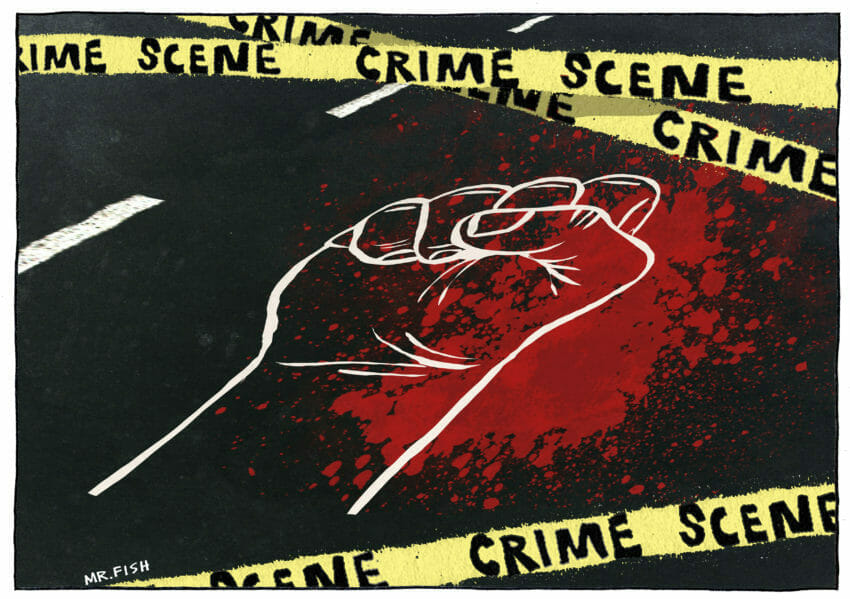 Mr. Fish / Truthdig
Mr. Fish / Truthdig
This is a repost of a March 25, 2018, column by Chris Hedges, who is on vacation. Truthdig’s publication of new articles from Hedges will resume next Sunday.
A 65-year-old New York City cab driver from Queens, Nicanor Ochisor, hanged himself in his garage March 16, saying in a note he left behind that the ride-hailing companies Uber and Lyft had made it impossible for him to make a living. It was the fourth suicide by a cab driver in New York in the last four months, including one Feb. 5 in which livery driver Douglas Schifter, 61, killed himself with a shotgun outside City Hall.
“Due to the huge numbers of cars available with desperate drivers trying to feed their families,” wrote Schifter, “they squeeze rates to below operating costs and force professionals like me out of business. They count their money and we are driven down into the streets we drive becoming homeless and hungry. I will not be a slave working for chump change. I would rather be dead.” He said he had been working 100 to 120 hours a week for the past 14 years.
Schifter and Ochisor were two of the millions of victims of the new economy. Corporate capitalism is establishing a neofeudal serfdom in numerous occupations, a condition in which there are no labor laws, no minimum wage, no benefits, no job security and no regulations. Desperate and impoverished workers, forced to endure 16-hour days, are viciously pitted against each other. Uber drivers make about $13.25 an hour. In cities like Detroit this falls to $8.77. Travis Kalanick, the former CEO of Uber and one of the founders, has a net worth of $4.8 billion. Logan Green, the CEO of Lyft, has a net worth of $300 million.
The corporate elites, which have seized control of ruling institutions including the government and destroyed labor unions, are re-establishing the inhumane labor conditions that characterized the 19th and early 20th centuries. When workers at General Motors carried out a 44-day sit-down strike in 1936, many were living in shacks that lacked heating and indoor plumbing; they could be laid off for weeks without compensation, had no medical or retirement benefits and often were fired without explanation. When they turned 40 their employment could be terminated. The average wage was about $900 a year at a time when the government determined that a family of four needed a minimum of $1,600 to live above the poverty line.
The managers at General Motors relentlessly persecuted union organizers. The company spent $839,000 on detective work in 1934 to spy on union organizers and infiltrate union meetings. GM employed the white terrorist group the Black Legion—the police chief of Detroit was suspected of being a member—to threaten and physically assault labor activists and assassinate union leaders including George Marchuk and John Bielak, both shot to death.
The reign of the all-powerful capitalist class has returned with a vengeance. The job conditions of working men and women, thrust backward, will not improve until they regain the militancy and rebuild the popular organizations that seized power from the capitalists. There are some 13,000 licensed cabs in New York City and 40,000 livery or town cars. The drivers should, as farmers did in 2015 with tractors in Paris, shut down the center of the city. And drivers in other cities should do the same. This is the only language our corporate masters understand.
The ruling capitalists will be as vicious as they were in the past. Nothing enrages the rich more than having to part with a fraction of their obscene wealth. Consumed by greed, rendered numb to human suffering by a life of hedonism and extravagance, devoid of empathy, incapable of self-criticism or self-sacrifice, surrounded by sycophants and leeches who cater to their wishes, appetites and demands, able to use their wealth to ignore the law and destroy critics and opponents, they are among the most repugnant of the human species. Don’t be fooled by the elites’ skillful public relations campaigns—we are watching Mark Zuckerberg, whose net worth is $64.1 billion, mount a massive propaganda effort against charges that he and Facebook are focused on exploiting and selling our personal information—or by the fawning news celebrities on corporate media who act as courtiers and apologists for the oligarchs. These people are the enemy.
Ochisor, a Romanian immigrant, owned a New York City taxi medallion. (Medallions were once coveted by cab drivers because having them allowed the drivers to own their own cabs or lease the cabs to other drivers.) Ochisor drove the night shift, lasting 10 to 12 hours. His wife drove the day shift. But after Uber and Lyft flooded the city with cars and underpaid drivers about three years ago, the couple could barely meet expenses. Ochisor’s home was about to go into foreclosure. His medallion, once worth $1.1 million, had plummeted in value to $180,000. The dramatic drop in the value of the medallion, which he had hoped to lease for $3,000 a month or sell to finance his retirement, wiped out his economic security. He faced financial ruin and poverty. And he was not alone.
The corporate architects of the new economy have no intention of halting the assault. They intend to turn everyone into temp workers trapped in demeaning, low-paying, part-time, service-sector jobs without job security or benefits, a reality they plaster over by inventing hip terms like “the gig economy.”
John McDonagh began driving a New York City cab 40 years ago. He, like most drivers, worked out of garages owned and operated by businesses. He was paid a percentage of what he earned each night.
“You could make a living [then],” he told me. “But everyone shared the burden. The garage shared it. The driver shared it. If you had a good night, the garage made money. If you had a bad night, you split it. That’s not the case anymore. Right now we’re leasing [cabs at the garages].”
Leasing requires a driver to pay $120 a day for the car and $30 for the gas. The drivers begin a shift $150 in debt. Because of Uber, Lyft and other smartphone ride apps, drivers’ incomes have been cut by half in many cases. Cab drivers can finish their 12-hour shifts owing the garages money. Drivers are facing bankruptcies, foreclosures and evictions. Some are homeless.
“The TLC [New York City Transportation and Limousine Commission] wanted to limit yellow cab drivers to 12 hours a day,” he said, referring to the distinctive yellow cabs that have medallions and can pick up passengers anywhere in the five boroughs. “There was a protest. Yellow cab drivers were protesting that they have to work a 16-hour day in order to make a living. It’s cut everything. Everybody’s fighting for that extra fare. You would be at a light with two or three other yellow cabs. You saw someone up the street with luggage you would run the lights to get to them. Because that might be an airport job. You’re risking your own life, risking getting tickets, you’re doing things you would never have done before.”
“We don’t have any health care,” he said. “Sitting for those 12 to 16 hours a day, you are getting diabetes. There’s no blood circulation. You’re putting on weight. And then there’s that added stress you’re not making any money.”
Uber and Lyft in 2016 had 370 active lobbyists in 44 states, “dwarfing some of the largest business and technology companies,” according to the National Employment Law Project. “Together, Uber and Lyft lobbyists outnumbered Amazon, Microsoft, and Walmart combined.” The two companies, like many lobbying firms, also hire former government regulators. The former head of the New York City Taxi and Limousine Commission, for example, is now on the board of Uber. The companies have used their money and their lobbyists, most of whom are members of the Democratic Party, to free themselves from the regulations and oversight imposed on the taxi industry. The companies using ride-hail apps have flooded New York City with about 100,000 unregulated cars in the past two years.
“The yellow cab has to be a certain vehicle,” said McDonagh. “It’s a Nissan. [Nissan won the bid to supply the city’s cabs.] Every yellow cab has to charge a certain price. When that drop goes down, that’s regulated by the city. They added on all these extra taxes, for the MTA and for the wheelchair [half of all yellow cabs are required to be wheelchair-accessible by 2020], a rush-hour tax. Uber comes in. No regulations at all. They could pick whatever type of car they want. Whatever color of car. They could change prices when it’s slow. They can lower the prices. When it’s busy they can do price surging. It can be two or three times. Whereas the yellow cab is just plowing along at the same rate at the same time. Going to Kennedy Airport from Manhattan is $52. No matter what the traffic is like, no matter how many hours it takes you to get there. Uber will jack up its prices two or three times. You might have to pay $100 to get to Kennedy Airport. While the yellow cab industry is almost regulated to death, Uber is coming in with new technology, figuring out different ways how [it is] going to make money. … It’s finished, with the yellow cabs.”
Life for Uber and Lyft drivers is as difficult. Uber and Lyft use bonuses to lure drivers into the business. Once the bonuses are gone, these drivers sink to the same economic desperation as those driving yellow cabs.
“Uber is leasing cars,” McDonagh said. “They have car dealerships that will sell. They advertise as, ‘Listen, you can have bad credit. Come down to Uber. We’ll get you the money or loan to buy this car.’ And what they do is they’ll take the money directly out of what you’re making that day to pay for the loan. They can’t lose. And if you go under, they’ll sell the car back to the dealership and then redo it for the next immigrant driver. There’s a whole scam going on.”
“As a yellow cab driver, you don’t see the world vision,” he said. “But there’s that famous term ‘the race to the bottom.’ You’re working more and more hours for less and less wages. This is the new gig economy. Someone will use an Uber to go to an Airbnb and get on his phone to order something from Amazon to eat in his house. All those shops are now gone. From cashiers to cab drivers. I feel like I’m a blacksmith or a typesetter at a newspaper business trying to explain to you what the yellow cab industry used to be. We’re becoming obsolete.”
“Guys are sleeping in the cab,” McDonagh said. “They’ll go out to Kennedy at 2 or 3 in the morning. They pull into the lot and go to sleep to catch [passengers off] the first flight that’s coming in from California a couple of hours later. You have guys who won’t go home for a couple of days. They’ll just stay out on the street. They roam the street to try to make money. It’s dangerous for the passenger. The amount of accidents will be going up because drivers are drowsy.”
McDonagh said Uber and Lyft cars must be regulated. All cars should have meters to guarantee an adequate income for drivers. And drivers should have health care and benefits. None of this will happen, he warned, as long as we live under a system of government where our political elites are dependent on campaign contributions from corporations and those who should be regulating the industry look to these corporations for future employment.
“We have to limit the amount of cabs, particularly here in New York City,” McDonagh said. “If we did it in the yellow cab industry for 50 years, why can’t we do it with Uber? They’re adding 100 cars a week through the streets of New York. This is insane. When you call an Uber, the biggest complaint people have now is, ‘The car is here too quick.’ They’re there within two or three minutes. I can’t even get dressed. … They’re rolling empty throughout the city, waiting for that hit.”
“Horses in Central Park are regulated,” he pointed out. “There’s 150 of them. They make a great living there, the guys on the horse and buggies. Say Uber comes in and says, ‘We want to bring in Uber horses. And we want to add 100,000.’ And let’s see how the market will handle it. We know what’s going to happen. No one will make money. They’re all around Central Park. And now no one can go anywhere because there are now 100,000 horses in Central Park. It would be considered madness to do that. They wouldn’t do it. Yet when it comes to the yellow cab industry, for 50 years all we could have was 13,000 cabs, and then within a year or two we’re going to add 100,000. Let’s see how the market works on that! We know how the market works.”
“They [the horses] work less hours [than cab drivers],” he said. “They don’t work in hot and cold temperatures. If you believe in reincarnation, you should come back as a horse in Central Park. And they all live on the West Side of Manhattan. We live in basements in Brooklyn and Queens. We haven’t upped our status in life, that’s for sure.”
Your support is crucial…With an uncertain future and a new administration casting doubt on press freedoms, the danger is clear: The truth is at risk.
Now is the time to give. Your tax-deductible support allows us to dig deeper, delivering fearless investigative reporting and analysis that exposes what’s really happening — without compromise.
Stand with our courageous journalists. Donate today to protect a free press, uphold democracy and unearth untold stories.
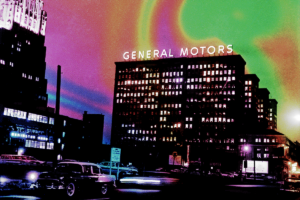


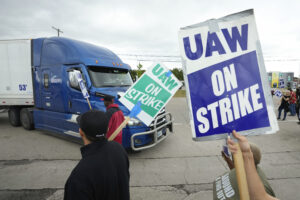
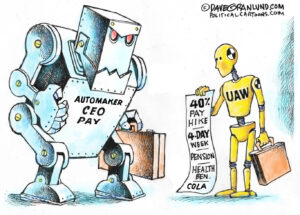
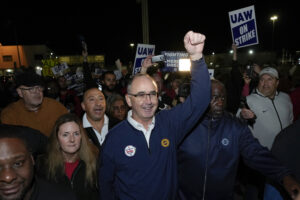
You need to be a supporter to comment.
There are currently no responses to this article.
Be the first to respond.